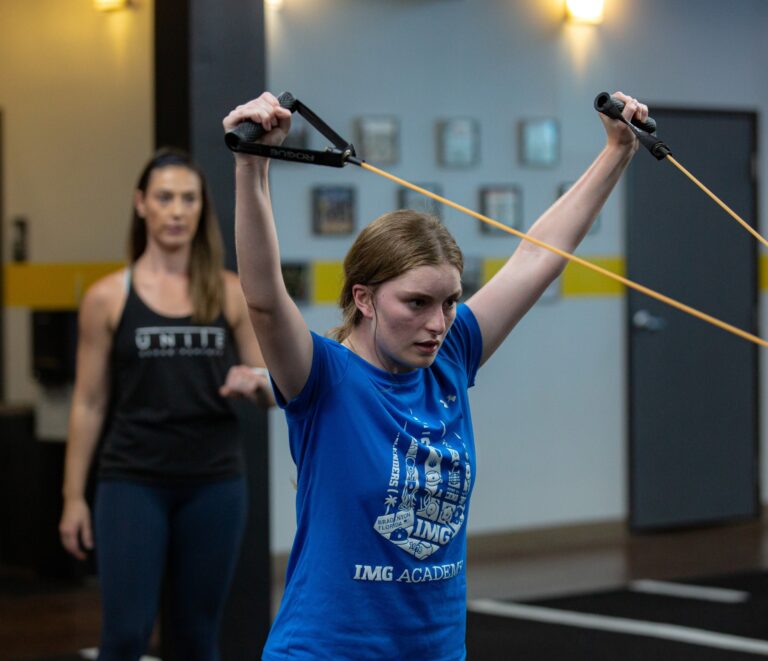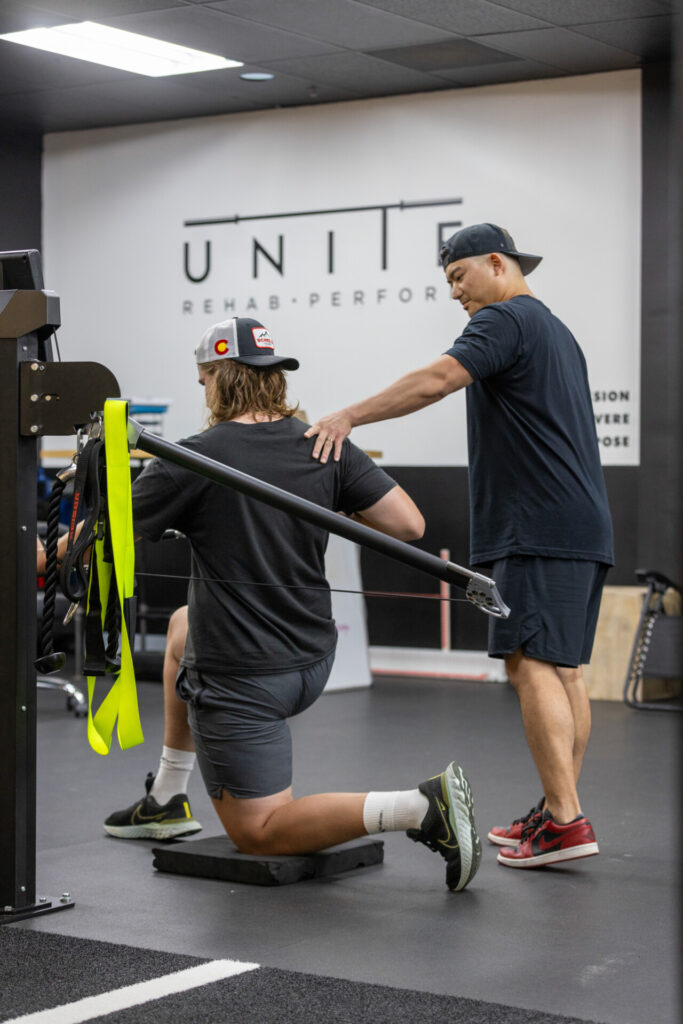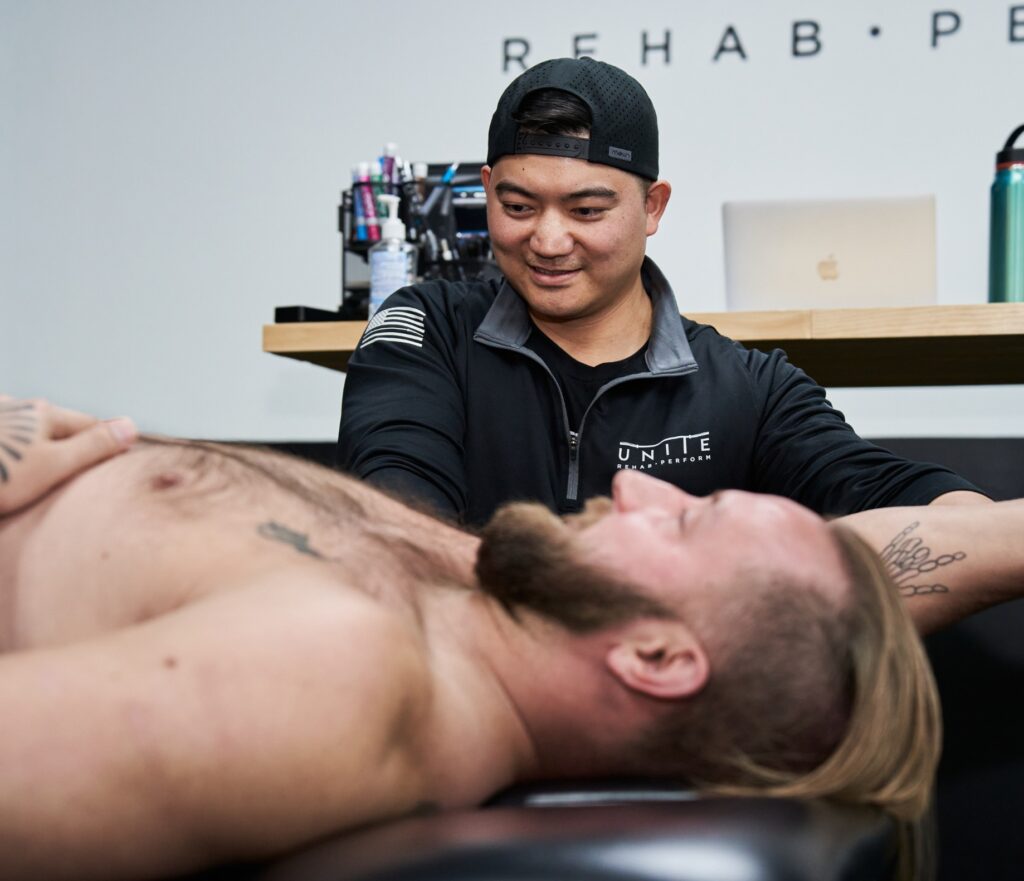
UNITE.rehab.perform
Denver's Best Sports Physical Therapy
Push Up Pain?
How to fix achy shoulders fast!
Pushups are a staple in any workout routine-whether you’re building upper body strength, improving endurance, or simply adding variety to your training. However, if you’ve ever experienced shoulder pain while doing pushups, you know how frustrating it can be. Shoulder discomfort can limit your performance, halt progress, and even prevent you from achieving your fitness goals.
At UNITE.rehab.perform, we understand how debilitating shoulder pain can be, and we’re here to help you get back to your workouts with confidence. If you’re experiencing pushup-related shoulder pain, here’s what might be causing it and how you can fix it fast.

1. Understanding The Cause of Pushup Shoulder Pain
Shoulder pain during pushups typically arises due to poor mechanics, muscular imbalances or overuse. Here are a few common reasons why your shoulders might be hurting:
- – Incorrect Hand Placement: If your arms are placed too wide or too narrow, the strain on your shoulders can increase. Also, pay attention to what direction your fingers are pointing.
- – Weak Stabilizing Muscles: The rotator cuff and scapular stabilizers play a key role in maintaining proper shoulder function. Weakness in these muscles can cause your shoulder to compensate, leading to pain.
- – Overuse: Repeated pushups without proper recovery time can irritate the shoulder joints and muscles, leading to inflammation and pain.
- – Moving Into Extreme Ranges of Motion: Lowering your chest too low – think deficit push ups, ring push ups, etc.
Understanding the root cause of your shoulder pain is the first step in addressing it effectively.


2. Fixing Shoulder Pain: Tips to Improve Pushup Performance
If you’re feeling shoulder pain during pushups, don’t panic! There are several steps you can take to reduce discomfort and start healing your shoulders:
Step 1: Check Your Form
Proper pushup form is crucial to preventing shoulder pain. Here’s a quick checklist for correct pushup position:
- – Engage Core Muscles: Your core should be activated throughout the movement to protect your lower back and help stabilize your body.
- – Hand Placement: Your hands should be places slightly wider than shoulder-width apart. This helps distribute the load evenly across your chest, shoulders, and triceps and lets the ball and socket joint of the glenohumeral move more efficiently.
- – Elbow Angle: When lowering into the pushup your elbows should be at about a 30-45 degree angle from your body, NOT flared out away from your body and NOT touching your sides.
- – Body Alignment: Keep your body in a straight line from head to heels. Avoid letting your hips sag or your lower back arch excessively.
- – Stay Within A Controlled Range of Motion: If you find your shoulder tilting forwards too much (commonly seen in ring push ups + dips), focus on retracting your shoulders blades instead to prevent the shoulder from that excessive forward tilt, which can damage the soft tissue structures at the front of the shoulder.

Step 2: Strengthen Supporting Muscles
Weakness in the muscles that stabilize the shoulder can lead to improper movement patterns, increasing strain on the join. Focus on strengthening the following muscle groups:
- – Rotator Cuff Muscles: The rotator cuff helps stabilize the shoulder joint. Incorporate exercises like external rotations, band pull-aparts, and dumbell raises to strengthen these muscles.
- – Scapular Stabilizers: The muscles around your shoulder blades are responsible for proper movement during pushups. Exercises like scapular pushups, wall slides, and rows can help.
- – Chest and Triceps: Building strength in the chest and triceps will reduce the workload on the shoulder and help you perform pushups more efficiently.
Adding these exercises into your training regimen can help improve shoulder stability and prevent pain during pushups.
Step 3: Incorporate Pushup Modifications
If your shoulder pain persists, consider modifying your pushups to reduce stress on your shoulders:
- – Knee Pushups: Lower the intensity by performing pushups on your knees. This reduces the load on your shoulders while still engaging the chest and triceps.
- – Elevated Pushups: Perform pushups with your hands elevated on a bench or box. This can decrease the angle of your pushup and reduce shoulder strain.
- – Pushup Variations: Try incline pushups or wall pushups to gradually rebuild shoulder strength before returning to full pushups.
These modifications allow you to maintain upper body strength training while minimizing shoulder discomfort.


Get Back to Pain-Free Pushups
Shoulder pain during pushups doesn’t have to hold you back. By checking your form, strengthening supporting muscles, stretching tight areas, and modifying your exercises, you can reduce pain and start progressing again.
If you’re unsure of your form or continue to struggle with shoulder pain, it’s a good idea to book a free movement screening with our team at UNITE.rehab.perform. Our physical therapists will assess your movement patterns and identify any weaknesses or misalignments that may be contributing to your discomfort. We’ll create a personalized plan to help you recover and get back to performing your best.
Contact us today to schedule your free movement screening and start your journey toward pain-free pushups!
Dr. Victoria Riester PT, DPT
©2020-2025 UNITE.rehab.perform LLC. All rights reserved.
UNITE.rehab.perform does not provide medical advice, diagnosis, or treatment through this website or related content. See additional information.